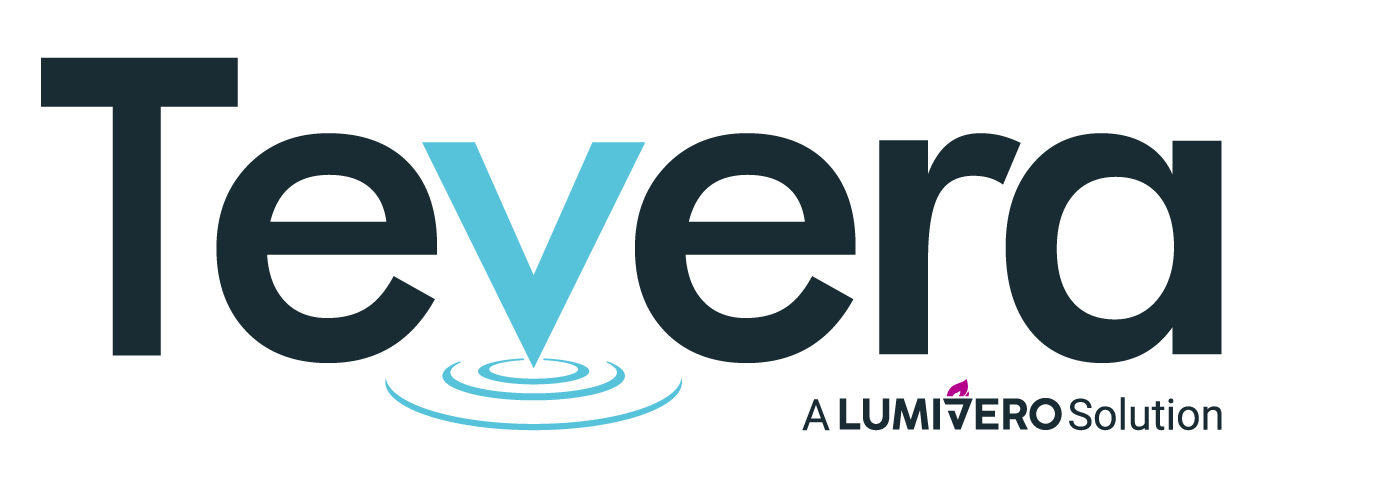Enhancing Academic Field Placements with Tevera

The quest for excellence begins in academia and extends beyond the classroom and into practical experiences. Crafting robust field placement programs is paramount for department chairs, professors, and researchers in education. These initiatives not only distinguish institutions but also shape students’ futures.
In this blog post, we delve into the significance of field placement software in enhancing educational experiences, focusing on the insights gleaned from department chairs.
Why Field Placement Software Matters
The correct field placement experience is critical for student development and education quality, especially in fields like teachers education and social work. But with so many moving pieces from scheduling to finding the best experience to suit individual student needs, it can be complicated and time-consuming organizing these field-based opportunities.
Field placement software makes it easy for administrators and students to organize field placement experiences and track progress over time. Having the software in place to build these experiences offers many benefits to educational institutions including:
- Strategic Program Development: By using placement management software, departments are able to devote proper effort to designing programs and curricula that equip students with practical skills – offering real-world exposure essential for professional growth.
- Competitive Edge: Institutions with exceptional field education programs stand out in the educational landscape. These programs attract top-tier students, bolstering the institution’s reputation and fostering partnerships with prestigious companies for post-graduation opportunities.
- Holistic Student Development: With the right student placement opportunities in place, students are able to graduate with a well-rounded education, as in-classroom theoretical learning is coupled with in-person, hands-on experience. By immersing students in authentic settings, these placements cultivate critical thinking, problem-solving, and interpersonal skills essential for success in the workforce.
Insights from Department Chairs: The Education Perspective
In the recent survey Selection of Field Education Management Software in Social Work by Field Educator, the consensus overwhelmingly favored the integration of field placement software into academic frameworks.
Key findings included:
- Enhanced Program Visibility:Departments leveraging field software reported heightened visibility and credibility within the academic community. The ability to showcase structured programs and successful student outcomes bolstered institutional prestige.
- Efficiency and Scalability:Field placement software’s intuitive interface and automation features streamlined administrative processes, allowing departments to efficiently manage placements for a larger student cohort. This scalability facilitated program expansion without compromising quality.
- Student-Centric Approach:Respondents appreciated the student-centric approach of the software, emphasizing its role in fostering student engagement and accountability. By placing students at the center of their learning journey, departments witnessed improved retention rates and academic outcomes.
The implementation of software for field placement has resulted in significant enhancements in student satisfaction and helped nurture a more supportive learning environment, fostering a sense of belonging among students and empowering them to take ownership of their academic and professional development.
Tevera: Elevating the Field Placement Experience
Student placement software such as Tevera has been observed to provide tangible benefits including improved student outcomes and enhanced collaboration and knowledge sharing among faculty members.
Tevera empowers institutions to elevate their field placement programs and cultivate the next generation of industry-ready professionals by prioritizing student needs, facilitating effective communication, and providing data-driven insights. As department chairs continue to refine their educational offerings, embracing innovative technologies like Tevera is instrumental in shaping the future of experiential learning.
Below are some of Tevera’s key benefits:
- Centralized Communication: With Tevera’s centralized data management and communication capabilities, educators can seamlessly coordinate placement activities, share best practices, and collaborate on program improvements. This approach cultivates a departmental sense of community and fosters continuous professional development among faculty members.
- Efficient Task Management: Tevera software streamlines administrative tasks and facilitates collaboration, making managing student data and training easy.
- Customization for Student Needs: Tevera empowers educators to tailor field experiences to meet individual student requirements. From identifying suitable placements to aligning with career aspirations, customization ensures meaningful learning journeys.
- Timely Feedback Loops: Constructive feedback is the cornerstone of student growth. Tevera facilitates seamless communication between students, supervisors, and faculty – fostering a culture of continuous improvement. Prompt feedback enables students to refine their skills and address challenges in real time.
- Streamlined Reporting: Accurate reporting is indispensable for evaluating program efficacy and student progress. Tevera simplifies data collection and analysis – offering insights into placement outcomes, student performance, and areas for enhancement. Real-time reporting equips stakeholders with actionable information to optimize program delivery.
Interested in learning more about how Tevera can enhance your institution’s field-based program? Request a demo or reach out today to discover its full potential.
SOLUTIONS
RELATED POSTS
PRODUCT OVERVIEW
See how Tevera can elevate your program.
Enhancing Academic Field Placements with Tevera

The quest for excellence begins in academia and extends beyond the classroom and into practical experiences. Crafting robust field placement programs is paramount for department chairs, professors, and researchers in education. These initiatives not only distinguish institutions but also shape students’ futures.
In this blog post, we delve into the significance of field placement software in enhancing educational experiences, focusing on the insights gleaned from department chairs.
Why Field Placement Software Matters
The correct field placement experience is critical for student development and education quality, especially in fields like teachers education and social work. But with so many moving pieces from scheduling to finding the best experience to suit individual student needs, it can be complicated and time-consuming organizing these field-based opportunities.
Field placement software makes it easy for administrators and students to organize field placement experiences and track progress over time. Having the software in place to build these experiences offers many benefits to educational institutions including:
- Strategic Program Development: By using placement management software, departments are able to devote proper effort to designing programs and curricula that equip students with practical skills – offering real-world exposure essential for professional growth.
- Competitive Edge: Institutions with exceptional field education programs stand out in the educational landscape. These programs attract top-tier students, bolstering the institution’s reputation and fostering partnerships with prestigious companies for post-graduation opportunities.
- Holistic Student Development: With the right student placement opportunities in place, students are able to graduate with a well-rounded education, as in-classroom theoretical learning is coupled with in-person, hands-on experience. By immersing students in authentic settings, these placements cultivate critical thinking, problem-solving, and interpersonal skills essential for success in the workforce.
Insights from Department Chairs: The Education Perspective
In the recent survey Selection of Field Education Management Software in Social Work by Field Educator, the consensus overwhelmingly favored the integration of field placement software into academic frameworks.
Key findings included:
- Enhanced Program Visibility:Departments leveraging field software reported heightened visibility and credibility within the academic community. The ability to showcase structured programs and successful student outcomes bolstered institutional prestige.
- Efficiency and Scalability:Field placement software’s intuitive interface and automation features streamlined administrative processes, allowing departments to efficiently manage placements for a larger student cohort. This scalability facilitated program expansion without compromising quality.
- Student-Centric Approach:Respondents appreciated the student-centric approach of the software, emphasizing its role in fostering student engagement and accountability. By placing students at the center of their learning journey, departments witnessed improved retention rates and academic outcomes.
The implementation of software for field placement has resulted in significant enhancements in student satisfaction and helped nurture a more supportive learning environment, fostering a sense of belonging among students and empowering them to take ownership of their academic and professional development.
Tevera: Elevating the Field Placement Experience
Student placement software such as Tevera has been observed to provide tangible benefits including improved student outcomes and enhanced collaboration and knowledge sharing among faculty members.
Tevera empowers institutions to elevate their field placement programs and cultivate the next generation of industry-ready professionals by prioritizing student needs, facilitating effective communication, and providing data-driven insights. As department chairs continue to refine their educational offerings, embracing innovative technologies like Tevera is instrumental in shaping the future of experiential learning.
Below are some of Tevera’s key benefits:
- Centralized Communication: With Tevera’s centralized data management and communication capabilities, educators can seamlessly coordinate placement activities, share best practices, and collaborate on program improvements. This approach cultivates a departmental sense of community and fosters continuous professional development among faculty members.
- Efficient Task Management: Tevera software streamlines administrative tasks and facilitates collaboration, making managing student data and training easy.
- Customization for Student Needs: Tevera empowers educators to tailor field experiences to meet individual student requirements. From identifying suitable placements to aligning with career aspirations, customization ensures meaningful learning journeys.
- Timely Feedback Loops: Constructive feedback is the cornerstone of student growth. Tevera facilitates seamless communication between students, supervisors, and faculty – fostering a culture of continuous improvement. Prompt feedback enables students to refine their skills and address challenges in real time.
- Streamlined Reporting: Accurate reporting is indispensable for evaluating program efficacy and student progress. Tevera simplifies data collection and analysis – offering insights into placement outcomes, student performance, and areas for enhancement. Real-time reporting equips stakeholders with actionable information to optimize program delivery.
Interested in learning more about how Tevera can enhance your institution’s field-based program? Request a demo or reach out today to discover its full potential.
Enhancing Academic Field Placements with Tevera

The quest for excellence begins in academia and extends beyond the classroom and into practical experiences. Crafting robust field placement programs is paramount for department chairs, professors, and researchers in education. These initiatives not only distinguish institutions but also shape students’ futures.
In this blog post, we delve into the significance of field placement software in enhancing educational experiences, focusing on the insights gleaned from department chairs.
Why Field Placement Software Matters
The correct field placement experience is critical for student development and education quality, especially in fields like teachers education and social work. But with so many moving pieces from scheduling to finding the best experience to suit individual student needs, it can be complicated and time-consuming organizing these field-based opportunities.
Field placement software makes it easy for administrators and students to organize field placement experiences and track progress over time. Having the software in place to build these experiences offers many benefits to educational institutions including:
- Strategic Program Development: By using placement management software, departments are able to devote proper effort to designing programs and curricula that equip students with practical skills – offering real-world exposure essential for professional growth.
- Competitive Edge: Institutions with exceptional field education programs stand out in the educational landscape. These programs attract top-tier students, bolstering the institution’s reputation and fostering partnerships with prestigious companies for post-graduation opportunities.
- Holistic Student Development: With the right student placement opportunities in place, students are able to graduate with a well-rounded education, as in-classroom theoretical learning is coupled with in-person, hands-on experience. By immersing students in authentic settings, these placements cultivate critical thinking, problem-solving, and interpersonal skills essential for success in the workforce.
Insights from Department Chairs: The Education Perspective
In the recent survey Selection of Field Education Management Software in Social Work by Field Educator, the consensus overwhelmingly favored the integration of field placement software into academic frameworks.
Key findings included:
- Enhanced Program Visibility:Departments leveraging field software reported heightened visibility and credibility within the academic community. The ability to showcase structured programs and successful student outcomes bolstered institutional prestige.
- Efficiency and Scalability:Field placement software’s intuitive interface and automation features streamlined administrative processes, allowing departments to efficiently manage placements for a larger student cohort. This scalability facilitated program expansion without compromising quality.
- Student-Centric Approach:Respondents appreciated the student-centric approach of the software, emphasizing its role in fostering student engagement and accountability. By placing students at the center of their learning journey, departments witnessed improved retention rates and academic outcomes.
The implementation of software for field placement has resulted in significant enhancements in student satisfaction and helped nurture a more supportive learning environment, fostering a sense of belonging among students and empowering them to take ownership of their academic and professional development.
Tevera: Elevating the Field Placement Experience
Student placement software such as Tevera has been observed to provide tangible benefits including improved student outcomes and enhanced collaboration and knowledge sharing among faculty members.
Tevera empowers institutions to elevate their field placement programs and cultivate the next generation of industry-ready professionals by prioritizing student needs, facilitating effective communication, and providing data-driven insights. As department chairs continue to refine their educational offerings, embracing innovative technologies like Tevera is instrumental in shaping the future of experiential learning.
Below are some of Tevera’s key benefits:
- Centralized Communication: With Tevera’s centralized data management and communication capabilities, educators can seamlessly coordinate placement activities, share best practices, and collaborate on program improvements. This approach cultivates a departmental sense of community and fosters continuous professional development among faculty members.
- Efficient Task Management: Tevera software streamlines administrative tasks and facilitates collaboration, making managing student data and training easy.
- Customization for Student Needs: Tevera empowers educators to tailor field experiences to meet individual student requirements. From identifying suitable placements to aligning with career aspirations, customization ensures meaningful learning journeys.
- Timely Feedback Loops: Constructive feedback is the cornerstone of student growth. Tevera facilitates seamless communication between students, supervisors, and faculty – fostering a culture of continuous improvement. Prompt feedback enables students to refine their skills and address challenges in real time.
- Streamlined Reporting: Accurate reporting is indispensable for evaluating program efficacy and student progress. Tevera simplifies data collection and analysis – offering insights into placement outcomes, student performance, and areas for enhancement. Real-time reporting equips stakeholders with actionable information to optimize program delivery.
Interested in learning more about how Tevera can enhance your institution’s field-based program? Request a demo or reach out today to discover its full potential.



















